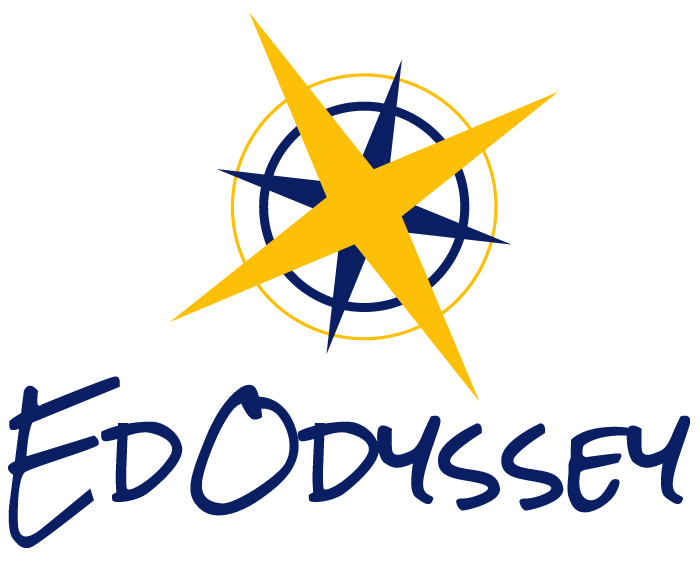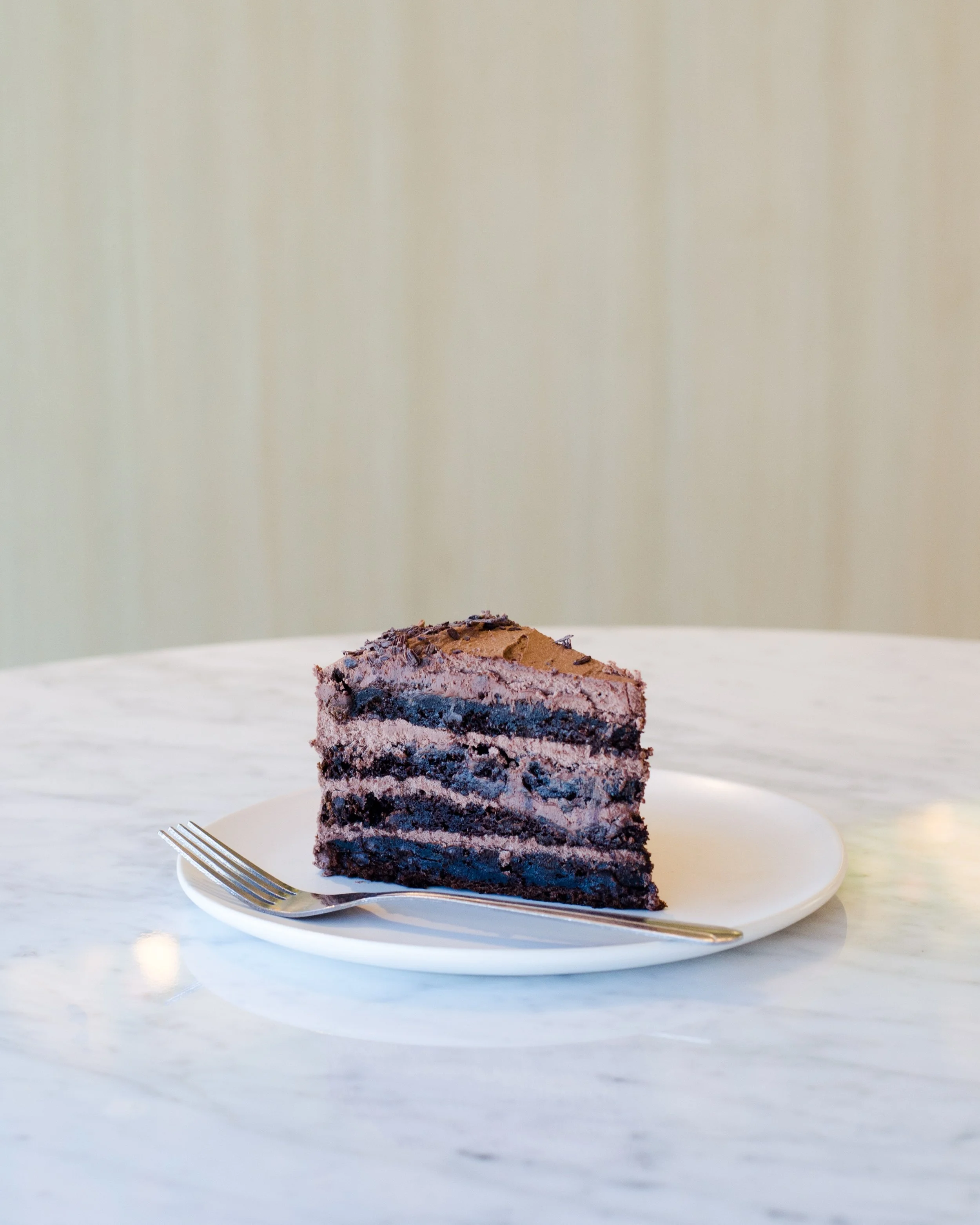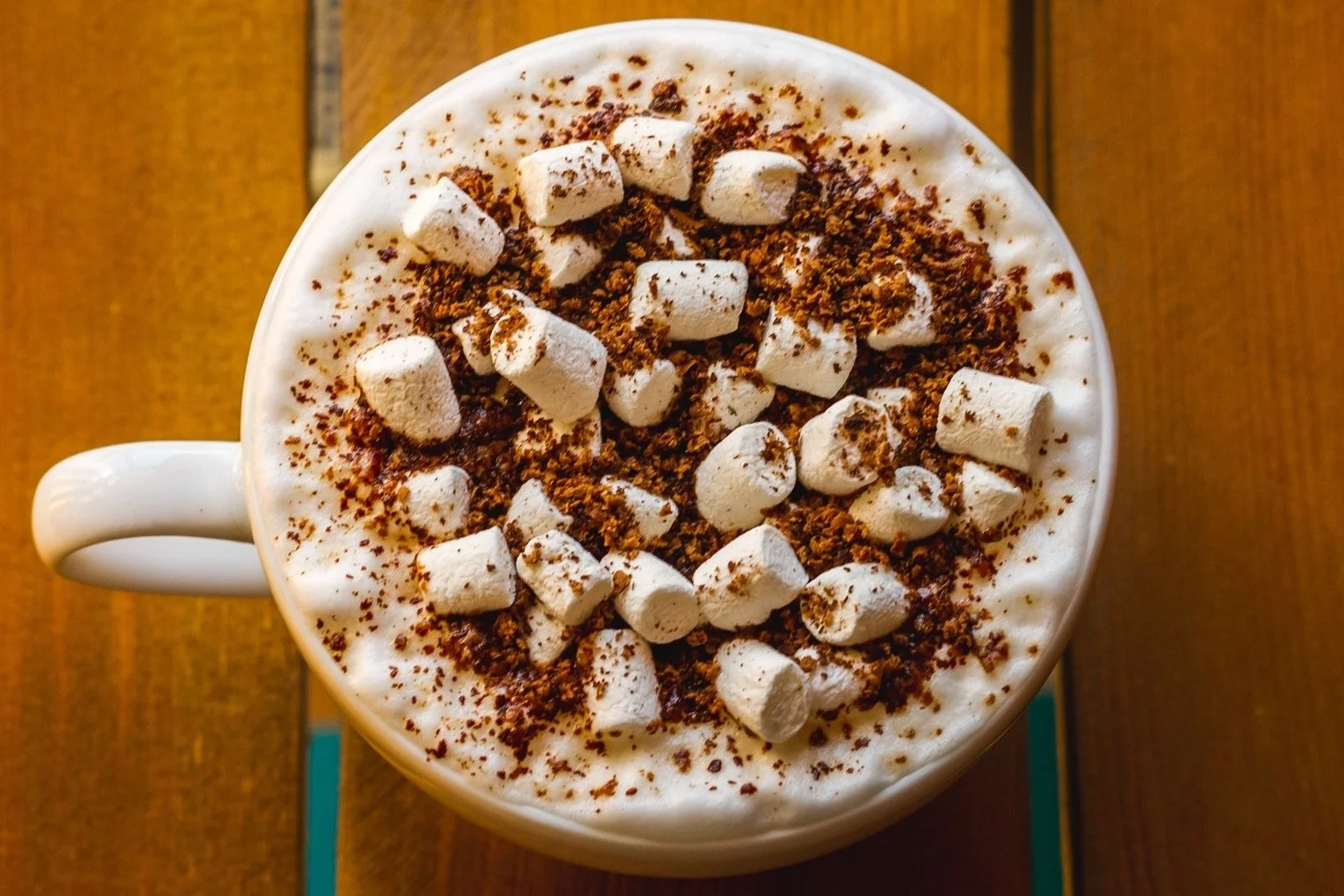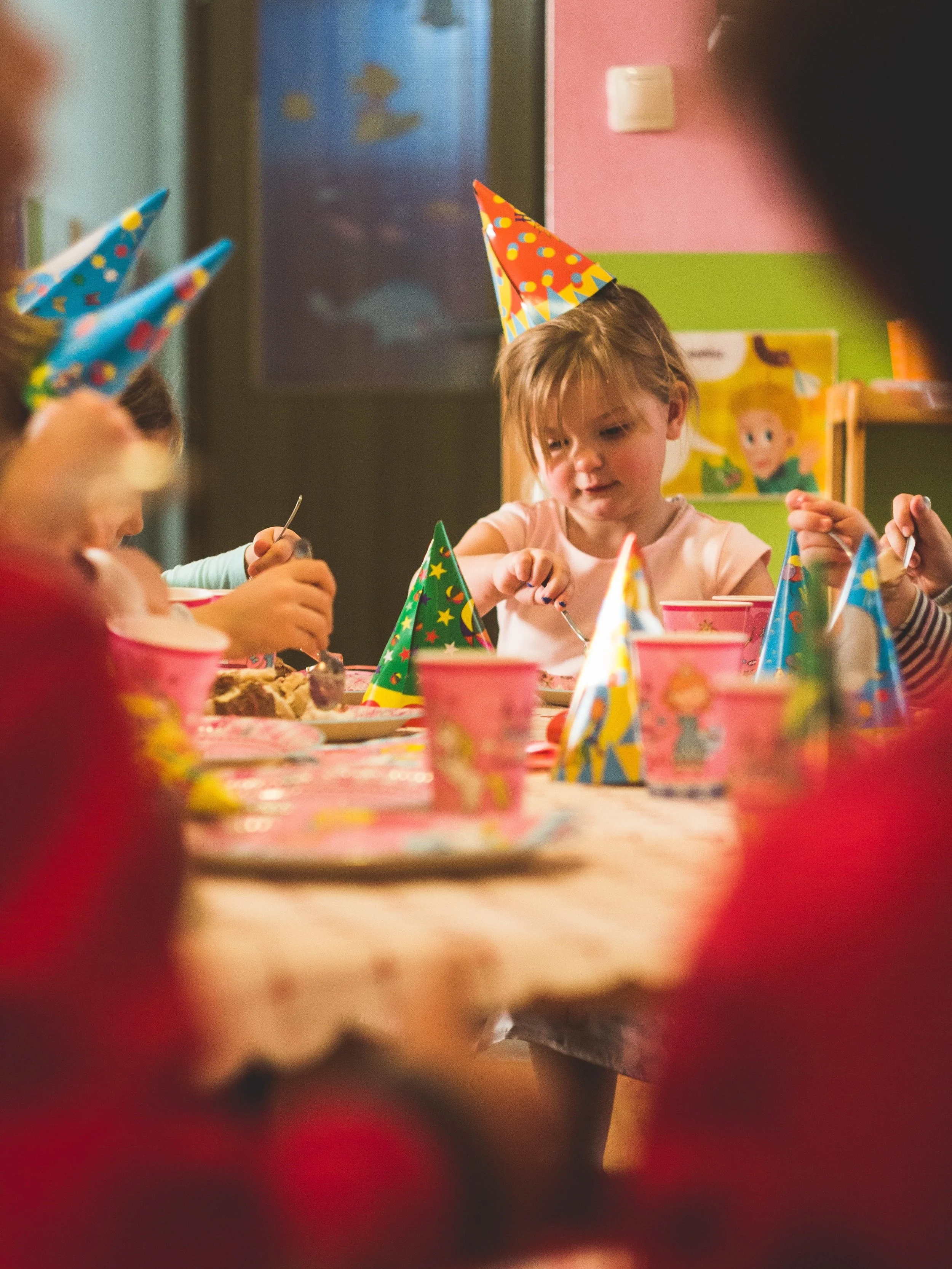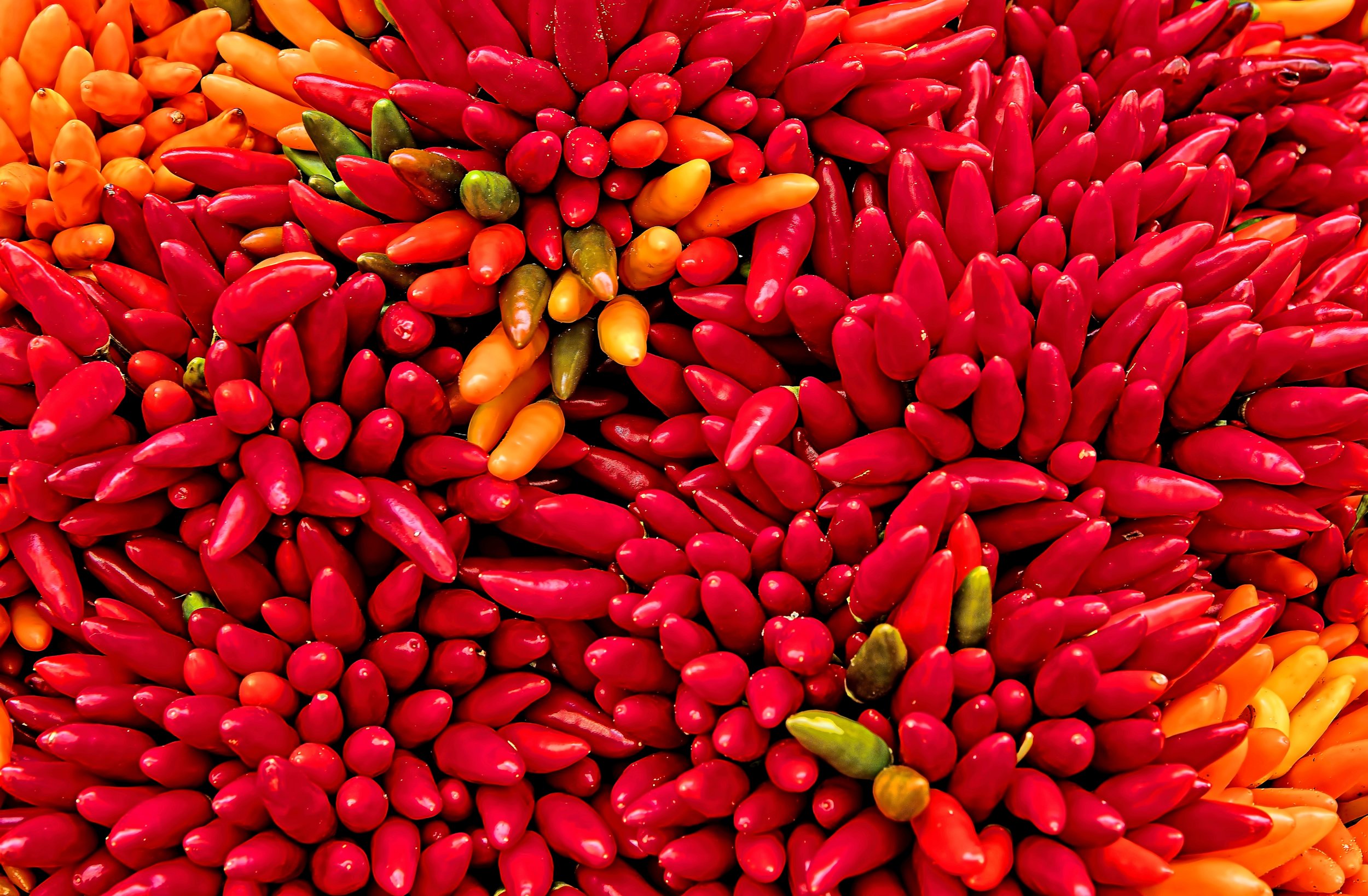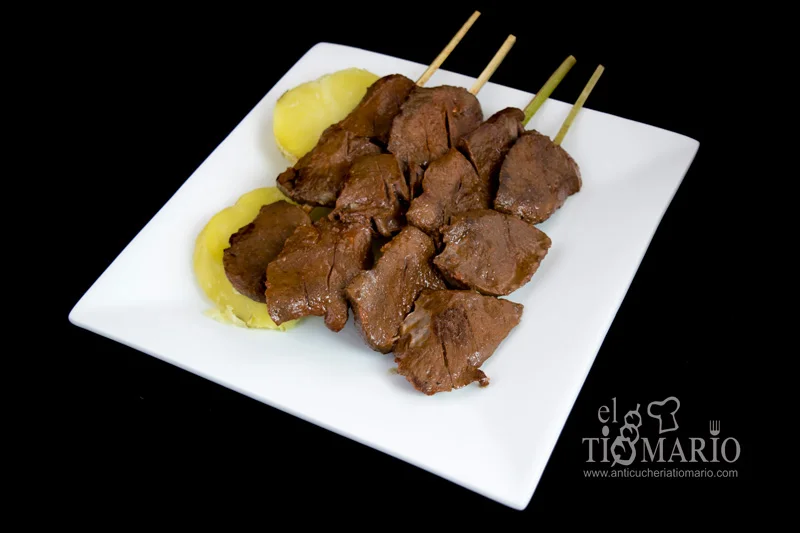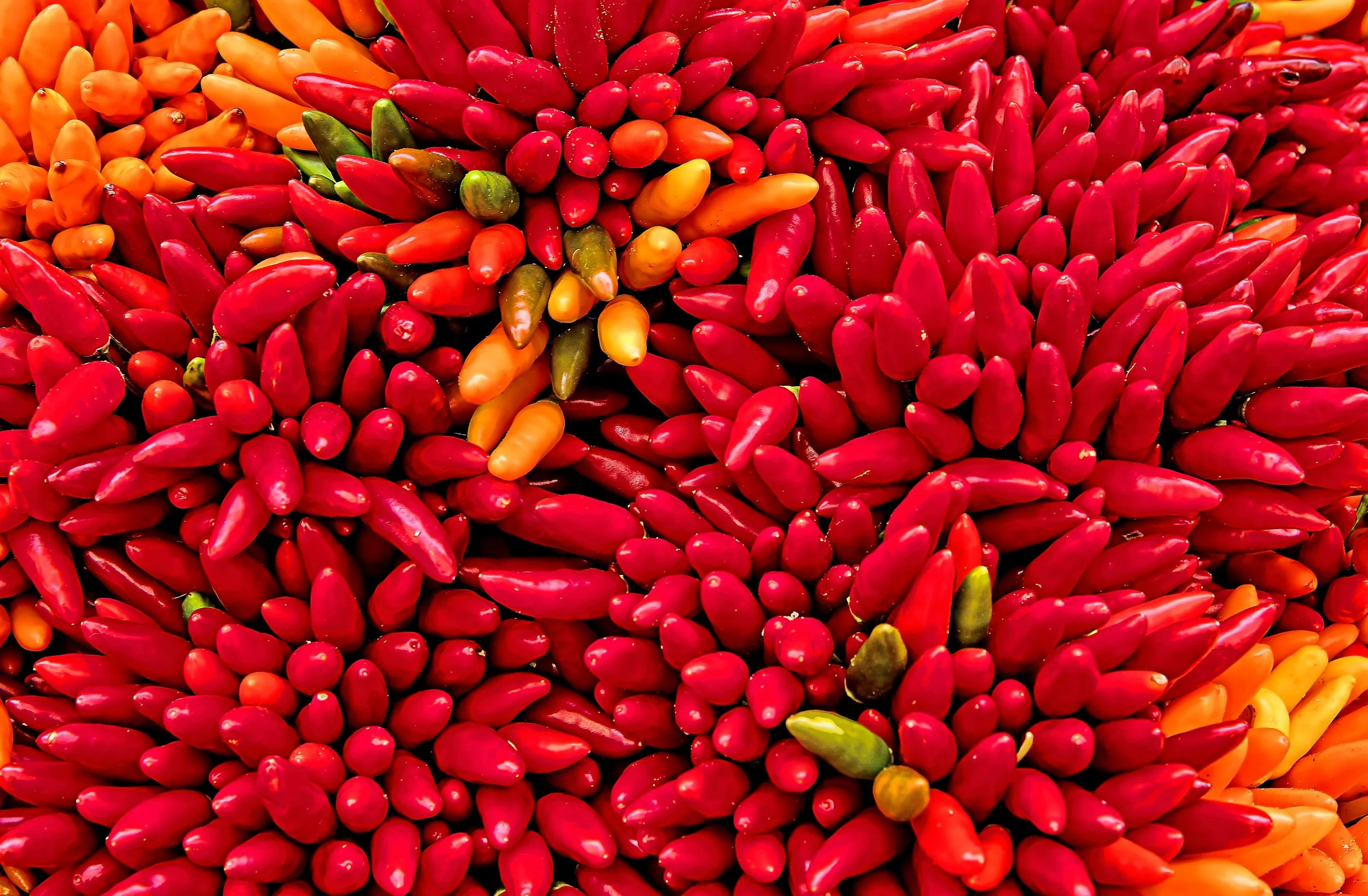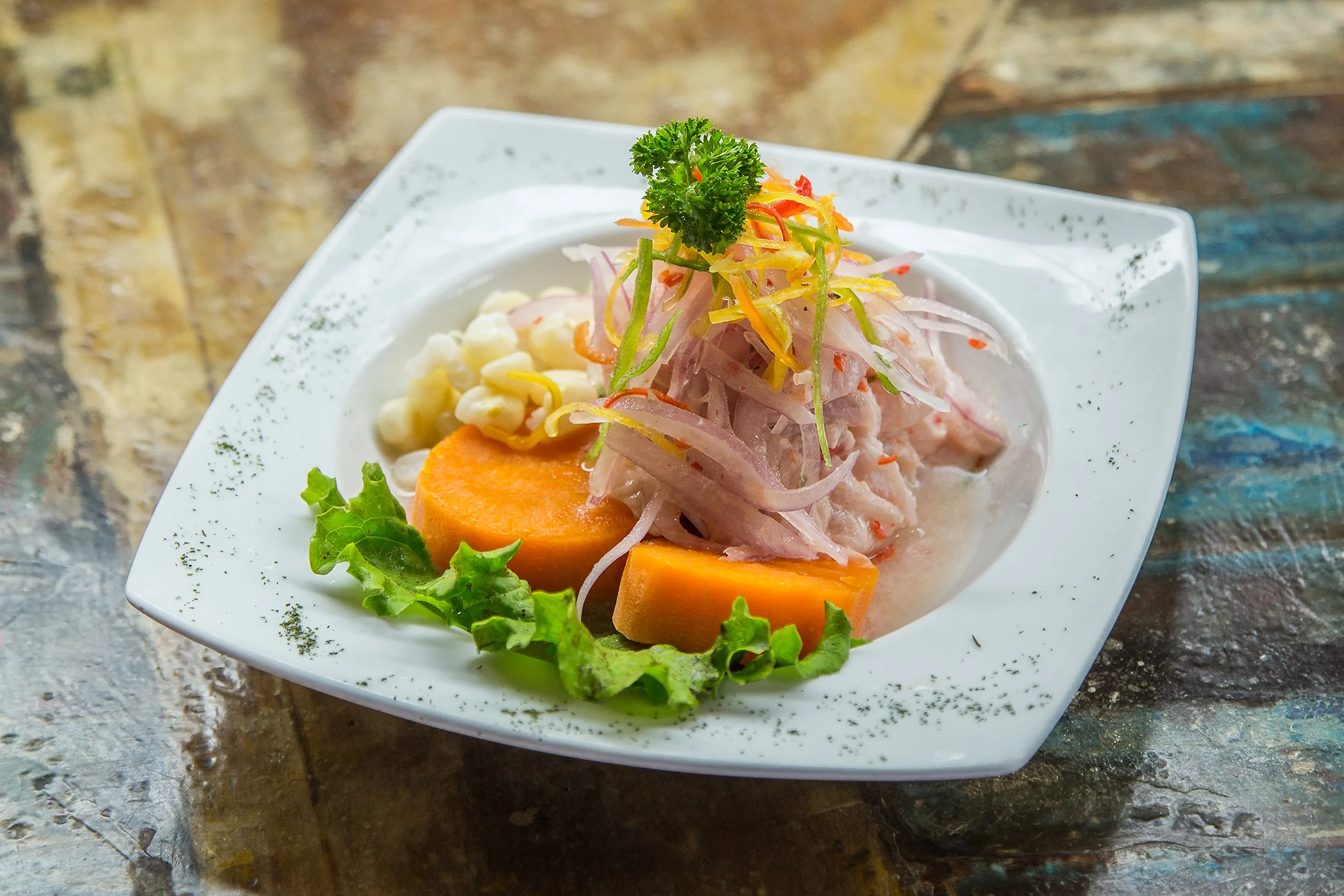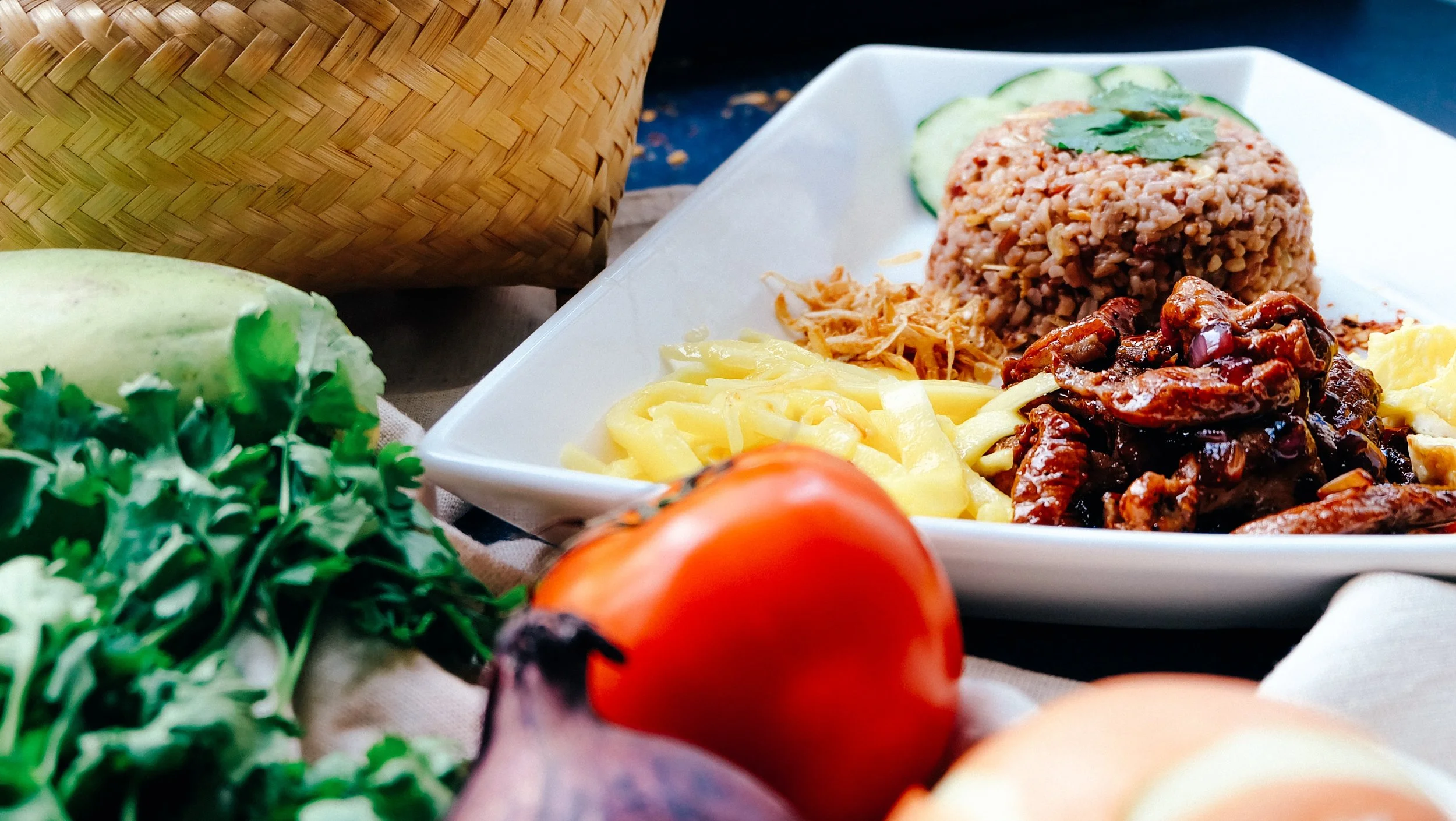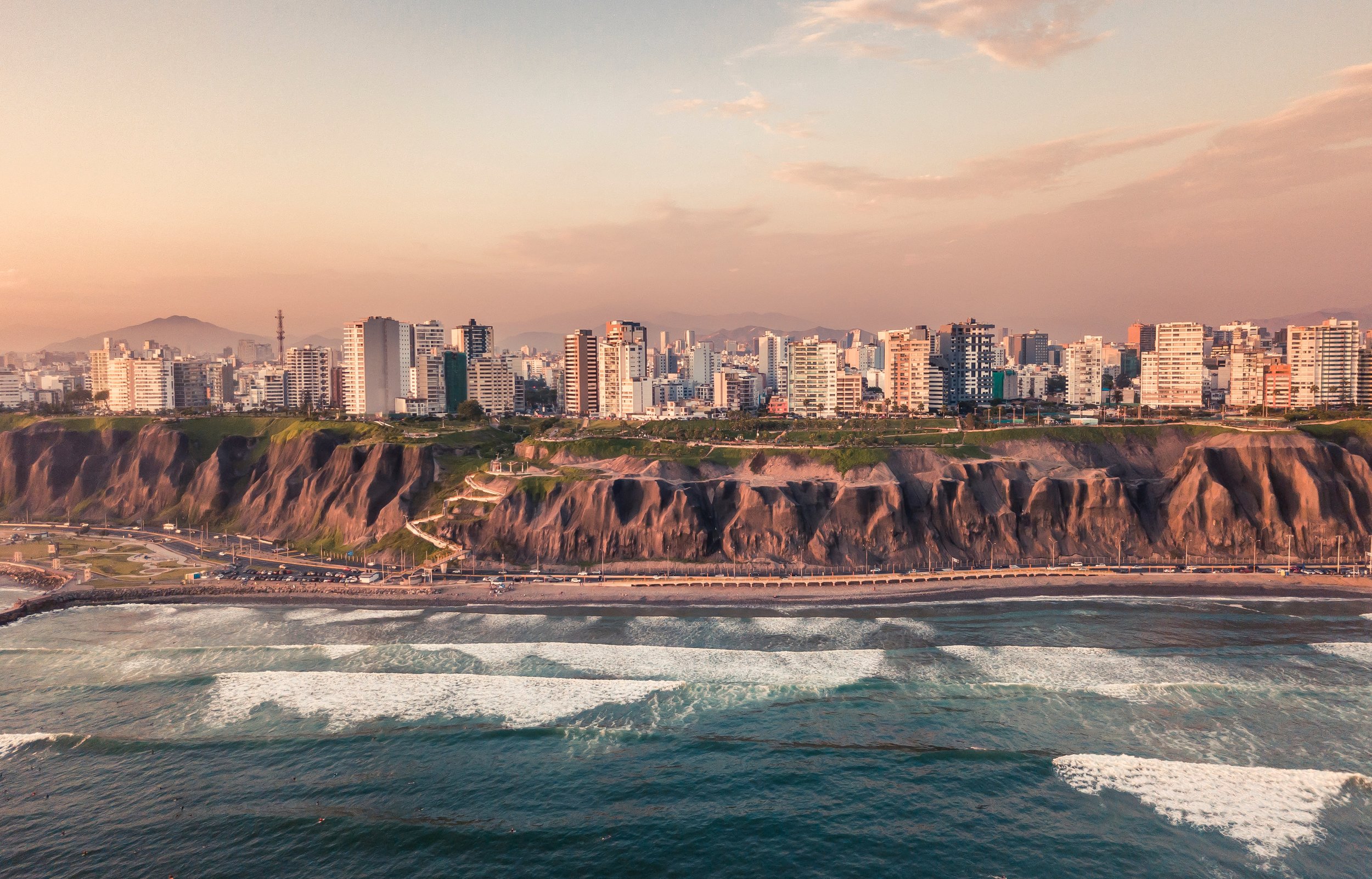The Sweet Truth Behind Peru's Dessert Culture
Peruvians love their chocolate in all forms and still drink hot chocolate around Christmas time despite the warmer summer weather in the southern hemisphere. Although they enjoy hot chocolate during the holiday season, they enjoy birthdays any time of year and the cake that comes with it!
Peru’s Rich Holidays & Traditions
When we hear the word “tradition”, we tend to think of gatherings of friends and family with some special type of food for the occasion. In Peru, a key part of embracing traditions like holidays and birthdays involve the food itself as well as what comes after the meal: Dessert! These special moments with loved ones wouldn’t be a celebration without some sweet treats!
Nonetheless, the desserts aren’t an afterthought in Peru, rather a vital part of the country’s many holidays and traditions. These confectioneries include chocolate, cake, candy and other delicious creations. If you’re reading this piece in the northern hemisphere, you probably associate at least some of these sweets with winter weather, but do you think that you eat them during the summer?
Regardless of the warm weather in Peru in December and January, due to its location in the southern hemisphere, the Peruvian holidays and traditions wouldn’t be the same without their emphasis on these delicious desserts, especially around Christmas time. These post-meal staples show their love and passion for chocolate which has a unique history and continues to play a major role in Peruvian culture.
Chocolate in Peru
When you think of chocolate, you might think of the European countries, such as Belgium and Switzerland. However, have you thought about where the Europeans would get the cacao beans that make chocolate? Have you wondered how chocolate eventually become one of the most popular treats in the world?
When Christopher Columbus returned from South America to Europe in the early 16th century, he brought bitter cacao beans. These beans wouldn’t become popular until after the Europeans added sugar to make the sweeter flavor of the chocolate that we have today, according to NPR.
As chocolate has become popular worldwide, it has become an important piece of Peru’s culture. Most recently, in the early 2010’s, a discovery of over three hundred types of cacao beans have been discovered in Peru.
Not to mention, a few years ago, a new strand of white cacao bean was discovered in Peru that’s extremely rare and expensive. This bean grew at a high altitude of over 4,000 feet so these special beans are less acidic, and therefore less bitter, and make some of the world’s purest chocolate because the beans don’t require additional flavoring to make them sweeter, such as vanilla, according to the NY Times.
Hot Chocolate in the South American Summer
Yes, you’ve read the heading correctly! If you’re in the northern hemisphere, you’re probably experiencing some form of colder, winter weather and enjoying some hot beverages! However, in Peru, they still like to enjoy their summertime despite temperatures over 80º F (26.6ºC) because they love chocolate!
Peruvians love their chocolate in all forms and still drink hot chocolate around Christmas time and New Years. Although they enjoy hot chocolate during the holiday season, they enjoy birthdays any time of year and the cake that comes with it!
Peruvians Have Their Cake & Eat It Too!
Cake has the center piece behind big Peruvian celebrations and none bigger than the birthdays parties. When I taught at a primary school in Lima, I saw how Peru takes birthdays so serious that the school made restrictions for anything beyond the birthday cake.
At the beginning of my semester of teaching in Lima, in addition to the birthday cake, the parents of the students brought in a lot of food, treats, and birthday accessories (hats, noise makers, etc) on their child’s special day. After a few chaotic birthdays with too many sweets and toys, we collectively decided that birthday accessories became distractions that were no longer allowed. We had a lot of parental support since the parents too felt the pressure of the birthday madness. Nevertheless, the cake kept its special place at the table.
In the teacher meeting when the decision was communicated, as the only American in the teacher group, I jokingly asked if the school was no longer going to allow cakes either. After a short pause, everyone laughed uneasily at the thought of no birthday cake.
At EdOdyssey, we don’t want our students to miss out any cake! In our past programs, we’ve taken our students to the chocolate museum in the center of Lima and they’ve learned about the history of chocolate and even tasted some of the best of Peru’s chocolate.
Are you a chocolate and cake fanatic? Do you not have much of a sweet tooth? In either case, Peru has plenty of bakeries across the country so you’ll have plenty of opportunities to try these one-of-a-kind treats. We don’t want you to miss out on some of the most delicious types of desserts that the world has to offer!
Check us out on social media and see what special foods and desserts that you can find in Peru, and elsewhere!
Sources:
Fabricant, Florence. “Rare Cacao Beans Discovered in Peru”. January 11, 2011. https://www.nytimes.com/2011/01/12/dining/12chocolate.html
Godoy, Maria. “In Peru, A Hunt for Chocolate Like You’ve Never Tasted It”. October 11, 2011. https://www.npr.org/sections/thesalt/2011/10/10/141153396/in-peru-a-hunt-for-chocolate-like-youve-never-tasted-it
Special Contributor: Kristen Richard
How Study Abroad with EdOdyssey Prepared Me for Harvard
My name is Jake Leary and I am currently a freshman at Harvard University, but the journey to get on campus has taken me from Massachusetts, around the world, and back home.
One of the world’s biggest Buddhas behind me!
My name is Jake Leary and I am currently a freshman at Harvard University, but the journey to get on campus has taken me from Massachusetts, around the world, and back home. I do not know my concentration (Havard’s fancy term for a major) yet, but I am very interested in Government and East Asian Studies. I am from Brockton, Massachusetts and attended high school in Boston. I was very involved in our writing club, jazz band, yearbook publication, and running cross-country for four years in high school. In the fall of 2016, as I went into my senior year, I had no idea that I would be taking gap year after graduating and travelling the world to countries like China and Peru. I did not really even know what a gap year was, nor that a gap year was possible for me. However, looking back on it, this became the best possible path for me to take.
During the final month of my senior year in high school, I decided I wanted to take a gap year. After thinking long and hard about it, I knew that I needed to give myself a break. This was not only a break from the routines of school and school work, but a deep breath to slow my life down.
How I learned breathing techniques and how to meditate in China.
As I look back on my senior year of high school, it turned out as the most stressful year of school for me and it didn’t allow me time to consider the next step after college. If I went straight into studying in college, I would have felt the burnout from high school, but luckily, I felt supported when I told my close friends, teachers, and mentors at my high school. However, I kept getting asked the same, repetitive question: “So what are you going to do?”. I had not given much thought to this which I probably should have, but I responded: “I might want to travel, but I will figure it out.” This simple, general response probably scared a bit those who asked, especially my school’s principal and president, when their valedictorian essentially had no clue what he was doing with this year off.
Despite the little worry I had about my future plans, I knew that everything would work out. This self-assured feeling became especially true when I found out about EdOdyssey after graduating. I had an inkling that I wanted to travel, and EdOdyssey’s several travel destinations for students intrigued me. After talking with EdOdyssey about possible plans for my gap year travels, I became very excited to embark on this journey.
Loved the Chinese tea!
Prior to my gap year, I had never travelled outside of the United States and felt something missing from the experiences in my life. With a desire to learn Mandarin for the first time, my first destination that I decided to travel to was China, halfway across the world. At 18, if you told me that I was moving to China, I would have never believed you. After arriving at night in Beijing, I was a little intimidated to say the least, since I could basically only say 你好 (hello) in Mandarin. After arriving in China, my hosts referred me to a breakfast that I later found because I was starving after 19 hours of travel. Now it was time for me to order something to the best of my ability which turned into an unforgettable experience.
Luckily, when I went to the counter of the restaurant, a boy around my age who spoke some English helped me order my soup and baozi--a steamed bun filled with meat-- which felt strange eating meat at 9am. Despite my reservations, I took my food and sat down at a communal table and started a conversation with a woman and her parents, from what I could tell. Although the meat tasted great, they noticed that I did not love my soup so they handed me a warm piece of bread. I told them my story through Google translate and then asked them where I could buy bottled water. After finishing eating, they walked me all the way to the grocery store. Despite a language barrier, it was these complete strangers’ natural instinct to help me. This kind of hospitality and friendliness I later continued to experience and encounter throughout my entire trip in China.
One of my favorite experiences in China was when I studied Mandarin for the first time in my life in the small city of Guilin (population of 5 million, a small city for China standards). At the language school recommended by EdOdyssey (Chinese Language Institute), it was extremely valuable to have one-on-one classes with my Chinese teacher, and solely focus on my study of Mandarin. Since I did not take Mandarin classes in high school, it made a tremendous difference studying a new language in its native country. I took what I learned in my classes and practiced persistently when I asked locals questions, went out to eat, and explored the city. My experience with Mandarin challenged me, but I did not feel as intimidated as I first thought. Even though I studied hard, I met tons of new and incredible people and had loads of fun simultaneously.
After teaching high school students in China about culture in the United States!
Reflecting on my experience in China, I now realize how valuable it truly was because of all of the amazing people I met, my newfound interest in Mandarin, and personal growth. If I had not received all of the help and guidance from EdOdyssey for my trip to China, I would never have met such amazing friends that brought me back to China this past summer to visit. I also would not have decided to continue my study of Mandarin here at Harvard. As I entered my first Mandarin class this fall at Harvard, I felt very prepared and confident in my foundation of Mandarin that I had established abroad. Within my first week of Mandarin class, while some of my peers struggled to introduce themselves, I could hold conversations with my teachers. After my travels in China, I thought about improving my Spanish, which I could not speak and hold a conversation a year ago.
Soon after my trip to China, I decided that one country would not suffice for my year off, and through EdOdyssey, I headed south to explore Peru. Initially, I felt worried about traveling to Peru because I thought about how I would essentially start from scratch again in a new country. I wanted a new and fresh experience in Peru, one entirely different from mine in China. This fear quickly disappeared as I fell in love with Peru’s numerous destinations, diverse culture, and delicious cuisine.
Papa a La Huancaína is a must-eat!
My homestay experience shaped my entire time in Peru. Living in Lima, with a central location close to all of the restaurants, shops, and downtown area was very convenient. I was only a walk away from one of Lima’s central parks Parque Kennedy with numerous restaurants and shops and the area that overlooked the Pacific Ocean Malecón de Miraflores where I enjoyed morning runs. My helpful host family got me acclimated to this new environment and showed me around to their favorite spots in Lima several times. In my unique homestay experience I only spoke Spanish in the home, forcing me to significantly improve it. I loved sitting with my host parents during meals while eating some of the best food I’ve ever eaten and learning more about Peru, South America, and my host parents’ lives. A cultural difference that I realized, the affection exuded by everyone I met, I soon came to love, with constant hugs and kisses when greeting someone. This speaks volumes to how much love and passion Peruvians truly have in their lives.
I loved most in Peru when I had the opportunities to give back in the form of volunteer work. Going to the community of Pamplona Alta in Lima exposed me to the hardships of many living in Peru, but also the great sense of perseverance and strong-will that its people possess. I helped in constructing concrete stairs, as the citizens of Pamplona Alta must climb the mountain-sides daily. After my experiences in Peru, I learned that life does not have to be so constantly fast-paced as we sometimes make it. This has helped me in how I go about living my life, in handling any stress and managing my time in the best way possible. I have learned to approach life with a more easy-going attitude that I know will stay with me.
In summary, the opportunities to travel because of EdOdyssey have changed my life in a very positive manner. Before my gap year, with a shy and timid personality, I mainly stuck to routines. Through travel, I have grown to become more independent and adventurous. I have also in the process become a strong advocate for students taking a gap year. An amazing chance to learn more about yourself, outside of the comforts of what you are used to, a gap year is transformative. It is a time to take a risk, but a risk with infinite benefits. Nevertheless, I would give the idea of going abroad with EdOdyssey serious thought and you may find yourself reflecting on it, and maybe even writing a blog about your experiences, in one year’s time!
The day before I left Peru, I enjoyed seeing all the places where I visited during my time in Lima from above!
Learn more about studying abroad in Peru with EdOdyssey.
The Secret Ingredients Behind Peru's Diverse Culinary Scene
Peru’s incredible access to land and sea has given it a natural base for some of the world’s most unique food that involves the influence from a variety of cultures.
History Behind Peru Powerful Gastronomy
Peru’s incredible access to land and sea has given it a natural base for some of the world’s most unique food that involves powerful influences from a variety of cultures. The country’s culinary foundation comes from a wide range of countries like Spain and China that has pushed the locals, and immigrants, to innovate its dishes that include food from both the land and sea. Collectively, the local Peruvians and migrants - who have integrated into the fabric of Peruvian culture - have embraced their responsibility for taking Peruvian meat, seafood, fruits and vegetables in order to combine them and make some of the world’s most delicious cuisine.
A Small Piece of Peru’s Culinary History
In September 2016, I sat down one night to eat dinner one night at Tío Mario’s, a local restaurant in Lima’s Barranco neighborhood, and I unexpectedly got an informative history lesson about one of Peru’s most famous yet seemingly bizarre dishes. At the restaurant, I placed an order of Peru’s famous “anticuchos” with confidence and a gringo accent that made the waiter question if I knew what I really ordered. The waiter glanced at me, slightly squinted after hearing me, and wanted to make sure that I knew I was ordering cow hearts.
Yes, anticuchos are cow hearts!
Cow hearts come on a skewer with a side of boiled, skinned potatoes. Don’t forget to ask for sauces!
In response, I smiled and told him that I love them and he seemed so pleasantly surprised that he asked me if I knew the story behind how cow hearts became a culinary favorite in Peru. At the time, I didn’t know so I asked him if he’d share a quick recap with me, given the fact that it’s a popular restaurant and it was busy at the time. He explained that when the Spaniards came and colonized centuries ago, they took the best of the food which left the rest for the locals.
He mentioned, in the times of Spanish colonial rule, the Spaniards ate the finest of steaks and the nice cuts of cow meat. Meanwhile, the Spanish colonists gave the Peruvian locals the leftovers, which you can imagine, included cow hearts. Aside from Spain’s impact of Peru’s cuisine, Peru has also innovated and infused local ingredients, foods, and products from other places.
Special Peruvian Staples
The variety of Peruvian food allows the locals and visitors from all around the world to try the array of dishes that indicates a wide range of tastes that play between sweet and spicy as well as flavors from the land and the sea. The delicious food, and the famous local soda that goes with it, gives Peru a unique identity in South America. The combination of various dishes incorporate local ingredients, spicy peppers, fruit, fish, and meat highlight and show off the many flavors of Peru.
Ají - these peppers are made and cultivated only in Peru, but please be aware, they can be very spicy! Before I tried it for the first time, one of my good Peruvian friends told me to avoid the seeds.
Orange ají peppers - that’s a lot of heat!
Why look at the seeds?
Similar to other spicy peppers, the seeds can make it very spicy, and according to pepperscale, the ají pepper can be four to twenty times spicier than a jalapeño. One of the most popular dishes in Peru is Ají de Gallina which involves making a spicy and creamy sauce with these delicious peppers, mixing the sauce and other ingredients with chicken, and adding rice and potatoes on the side. It’s as delicious as it sounds!
Don’t forget about the juice - it doesn’t bite!
Ceviche - Also written as “Cebiche”, this national Peruvian dish combines the best of the land and sea. Peru’s world-famous dish combines fresh, uncooked fish sprinkled with lime juice along with finely cut onion along with a sides of peeled “camote” (sweet potato) and a side of “canchita” (fried corn kernels) to provide a salty crunch.
Local tip: you should spoon the juice mix of fish oils and lime juice from the bottom of your place on top of the fish as you eat it to combine the flavors! Don’t forget about the juice, or as the Peruvians call it “la leche de tigre” (tiger’s milk) because despite the intense name the flavor has an acidic yet smooth finish!
Lucuma - This special fruit can only be found in the region of the Andes mountain region, especially in Peru. Its natural sweetness makes it into a refreshingly delicious addition to ice cream that you can find in most shops in Lima, depending on the season.
Inca Kola - This Peruvian soda has become one of Peru’s best selling products and one of the most unique, untold stories. True story: Coca Cola tried to compete directly with Inca Kola in the 1980’s, and surprisingly, the Peruvians still stayed loyal to Inca Kola. Although Coca Cola came in and took 21% of the market during that time, Inca Kola had control of over 30% of the soda market in terms of sales. Although Coca Cola lost the initial sales battle, it won the war because it now owns 50% of the business, according to a report by Penn’s Wharton Business School.
Chinese Influence
The Chinese people who have immigrated to Peru and have changed the face of Peru’s culinary with their food has become some of Peru’s most popular food known as “Chifa”.
Surprisingly, more than twenty Spanish-speaking countries simply label food with Chinese as “comida china” or Chinese food, but Peru’s distinct heritage has given this unique blend a name that infused new elements new to the Peruvian diet. The words “chi” and “fa” in Chinese collectively mean “to eat rice” because the Chinese foods incorporated rice that became more widely used as the Chinese influence grew and new food group gained popularity.
In Lima, the popularity of these Chifa restaurants has grown because the Chinese took Peruvian recipes and incorporated local ingredients. Today, the Chifa restaurants offer the local sauces, such as the aforementioned ají sauce, to go alongside their stir-fry-style meals. When the Chinese first came, they lacked certain ingredients such as ginger so they had also began incorporating well-known Peruvian foods, such as tomatoes and onions, into their foods. These restaurants stand out in most of the neighborhoods as Chifa continues to boom in major cities like Lima.
Chinese-style rice along with Peruvian ingredients and staples, such as potatoes, have become all part of the famous “Chifa”!
Whether you like seafood and meat, or if you prefer more fruits and vegetables, you have no excuse to avoid Peru! The endless amount of food options welcome anyone to come and try the wide array of foods. You can be adventurous and try the cow hearts, or you can pick from a lot of other foods!
Have you tried any different foods lately? Do you want to try something new and adventurous? Please visit our custom programs page if you’re interested in a faculty-led or high school program to Peru, or our study abroad page if you’re a student interested in studying abroad in Peru!
Why Study In Peru?
Lima has taken the natural beauty of existing landscape and it given it a modern twist and the inhabitants of the city have taken traditional Peruvian foods and fused it with existing flavors from other parts of the world.
What Makes Peru Different
Of all the places to study around the world, Peru offers the natural beauty of the Pacific coastline along with a modern twist. In addition to its unique scenery, the locals in big cities like Lima have taken traditional Peruvian foods and ingredients and fused it with exciting, rich flavors from other parts of the world. At EdOdyssey, we want to give you a real look into how Peru’s beauty continues to combine and fuse local and foreign influences into the vibrant fiber of its culture.
Are you looking to explore a new, exciting place with some of the most diverse food and most distinct views in the world? Do you want to experience tasting the fusion of both Asian and South American foods?
Landscape in Lima - Cliffs and Pacific Coast
These cliffs go over one hundred feet high (30 meters+)!
In Peru, you’ll see how the unique terrain boosts some of the most awe-inspiring scenery in all of South America that juxtaposes the best of both the earth and sea. You’ll have the opportunity to see how the pacific coast runs along Lima with its distinct mix of rocky and sandy beaches along the cliffs.
Along the Peruvian coastline, you can see Lima’s steep cliffs hugging the coastline. With EdOdyssey, we take you to see the best views of the city from on the edge of these mythical cliffs. Not literally (don’t worry), but you’ll get close enough to the end of the cliffs to see the highway below, the ocean in the distance, and one of most amazing views from an open air mall built into the cliff. Believe it or not, Lima has a mall called Larcomar that looks out onto the Pacific coast.
Wait, a mall with an ocean view? Yes!
Natural cliffs guard Lima from the Pacific waves.
In the Peruvian capital, Larcomar is the only open-air mall in the world with stores, shops, and restaurants built into the cliffs. In the past, we’ve taken students to eat at world-famous chef Gastón Acurio’s restaurant Tanta, a small international Peruvian restaurant chain. While you’re in one of South America’s biggest cities in South America, you’ll notice how quickly you go from standing on top of one of the most picturesque coastlines in all of the world to taking a plane two hours away and surrounding yourself with mountains in Cusco.
Experiencing Cusco
In Cusco, you’ll see a smaller city with more aspects of Peruvian mountain life. In the streets, you’ll see people walking with their local animals, such as llamas and alpacas, walking the local streets in their traditional clothing (as seen in the picture below). The best part? You’ll get a chance to see building structures that have been around for centuries so you’ll get a sense of how Peru incorporates tradition along with the modern!
During our past trips to the region around Cusco, you will have the opportunity to see the famous Peruvian llama, as seen on the right. Additionally, you’ll learn about Peru’s agriculture, gastronomy, and other local animals such as the vicuña and alpaca during one of our day trips!
Food, Drink and Culture in Peru
Peru has one of the most diverse populations in all of South America, and with that, came cross-culinary fusion that you will want to see and taste while in Peru!
In the late 19th century and early 20th century, Chinese immigrants came to Peru and they brought with them their own cooking style and flavors that became mixed with local Peruvian cuisine now popularly known as “Chifa”. This Peruvian and Chinese fusion has created some of the best Peruvian dishes, including the iconic chaufa (combination-style fried rice) and lomo saltado (sauteed sirloin strips with onions and tomatoes accompanied with fries and/or rice).
Chaufa combines the Chinese style fried rice with Peruvian chicken and Peruvian sauces while lomo saltado takes the idea of traditional Chinese stir fry and adds rice and fries that come from Peruvian potatoes. These two popular dishes highlight two of Peru’s biggest culinary staples: potatoes and chicken. Although many people think of Ireland as being known for potatoes, this starchy staple actually comes from Peru which boosts over three thousand different types of potatoes.
Want to hear more about Peru’s landscape and gastronomy? No worries, you’ll have the opportunity to read more in the coming weeks with more about it! As educators with a passion for Peru, we want you to experience these places.
Please fill out a study abroad application today so we can learn more about your interest in going abroad to Lima!
